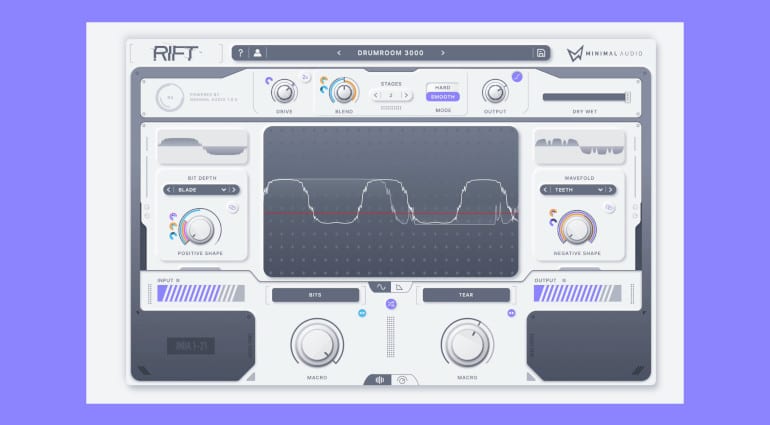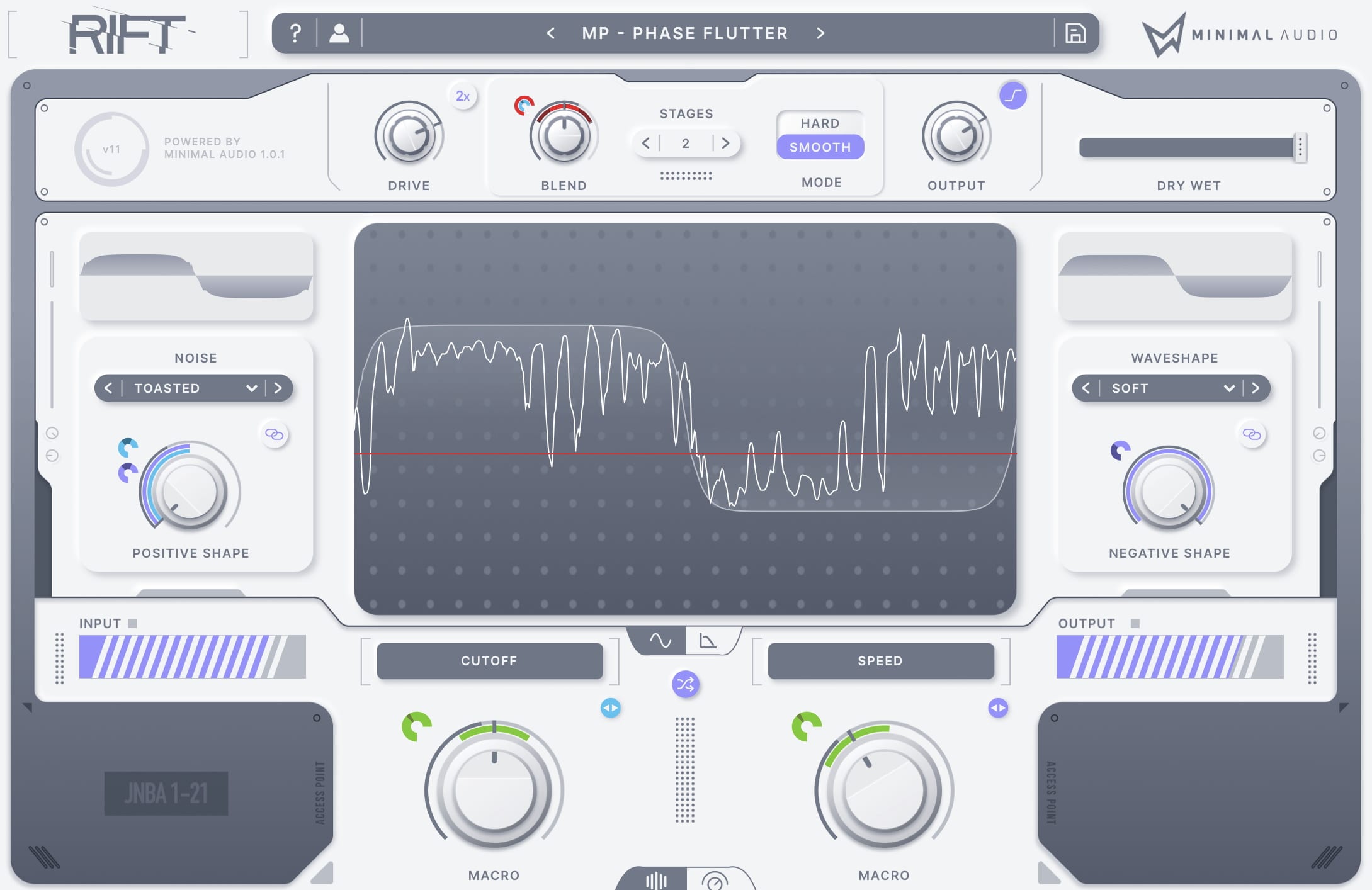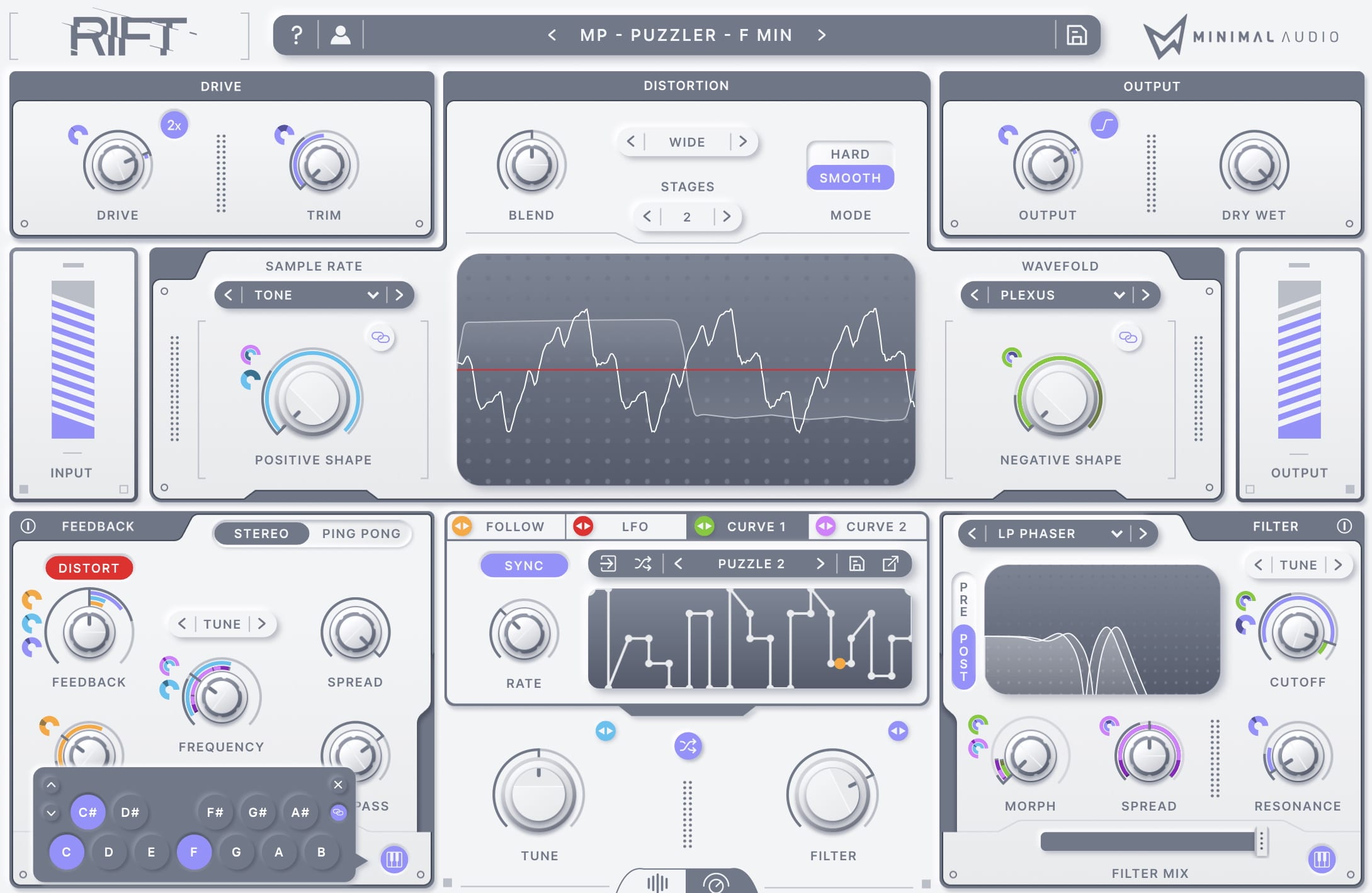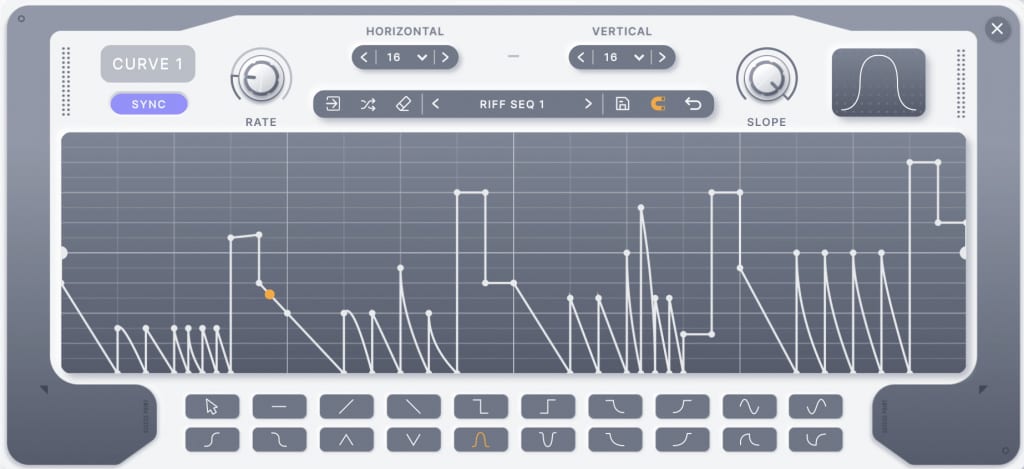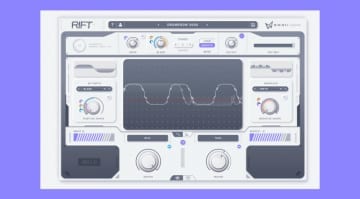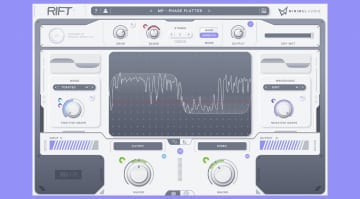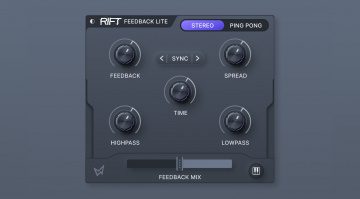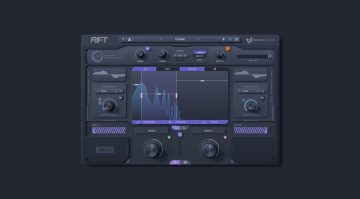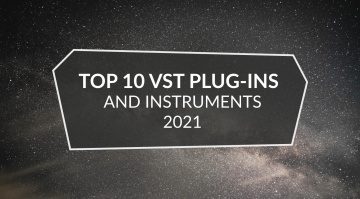Review: Minimal Audio Rift pushes the creative distortion envelope
As DSP wizards’ primary concern has become the painstaking modeling of decades-old analog equipment, it’s easy to forget the greatness of digital processors. Digital is an endless playground for ideas where the only constraints are imagination, math skills, and computing power. In today’s quasi-hipster realm of “analog warmth” unabashedly digital plug-ins have become somewhat of a novelty. I don’t know about you, but my brain likes novelty. And distortion. Heaps of it. Luckily, Minimal Audio Rift distortion plug-in is exemplary in both.
Trash to treasure
Released in 2012 (which makes it ancient in plug-in years), iZotope’s Trash 2 is still something of a gold standard in sophisticated distortion plug-ins. It has seemingly all the gritty analog and geeky digital nuances of the stuff combined into a tweaker’s paradise. While FabFilter’s Saturn 2 comes close, I couldn’t really think of an immediate successor to it, and it’s been close to a decade. Then Rift dropped and, a few minutes in, I already think iZotope can pass the torch to the Minimal guys. Rift expertly takes the “distortion lab in your DAW” concept to 2021. It feels “cutting-edge” like few plug-ins have in years past.
Rift’s core identity is bipolar processing, a method for distorting and manipulating the positive (upper) and negative (lower) halves of a waveform separately. The two are then mixed in different ways and modulated into a life of their own. Bipolar processing is not a new and groundbreaking approach, but it’s exceedingly rare. You will find splitting waveforms like this in a handful of plug-ins, such as Fruity Waveshaper, and possibly some Eurorack modules. As the first distortion plug-in designed around this largely unexplored concept, Rift is bound to sound fresh and different. Then, the robust modulation options (which include MIDI keyboard input) and esoterics like tuning the filter cutoff frequency to musical notes turn Rift into a distortion synthesizer, of sorts. As far as I’m concerned, the envelope-pushing thinking behind Rift is only rivaled by Glitchmachines.
Styled in a sanitary blue and gray scheme slightly reminiscent of Trash 2, Rift features 2 main views: Play and Advanced. Play View contains the essential controls for dialing in the core sound. Advanced View is where you put on your lab coat and overshoes to enter the reactor control room. You can access the same features in both views, it’s just that Advanced has all the cryptic parameters to explore. Dividing complex plug-ins into separate views like this is something developers should do more often – it makes everyone happy.
Six ways from Sunday
Rift is beaming audio through six sections, arranged near an oscilloscope-like analyzer. The latter pulls double duty, visualizing either the output signal and distortion scope (how the positive and negative waveform halves interact), or the filter’s frequency response (while in Play View). You can’t re-arrange the sections, but you can bypass them individually, and the filter has a Pre/Post switch for basic routing experiments.
- Rift – Play View · Source: Minimal Audio
- Rift – Advanced View · Source: Minimal Audio
The processing chain begins with Distortion, where you can chose from 30 distortion algorithms for the positive and negative waveform halves. There are 5 distortion types – waveshaping, wavefolding, noise, bit depth reduction and sample rate reduction. You can select the number of distortion stages – more stages equals more sauce at a greater CPU expense. You can also control the blend between waveforms + and -, with two modes: Hard (brighter, more defined) and Smooth (warmer, less defined). The Drive, Drive Boost, Trim, and Output controls (in Advanced View) enable immediate distortion shaping. You can also engage an output limiter with soft clipping. Additionally, the distortion engine can operate in Stereo, Wide Stereo (inverts the right channel bipolar processing), Mid/Side, Mid, and Side modes.
Next up is the Feedback section where you can tap into stereo and ping-pong delays, distorted feedback, chorus and flanger-like modulation, resonators, and even frequency/note-tuned feedback. Indeed, the feedback rate can be set in notes (MIDI input or specific notes), Hz (for comb filtering effects), milliseconds, and BPM-synced note divisions. Using the Pitch Snap tool, you can quantize the Frequency parameter to notes and scales. This way, you can play and modulate melodies that sound like nothing else. The feedback is further shaped by Amount, Distort, and Spread parameters. There are also HP/LP filters and a Mix slider.
The Filter section is evolved to the point of existing as a separate plug-in – Rift Filter Lite – which you can grab for free for a limited time. For starters, it features 24 algorithms and 4 filter types: Basic, Morph, Peaking, and Harmonic. Then, the Cutoff parameter can be assigned to track MIDI input, quantized to notes and scales, or worked into standard frequency cutoff. It’s accompanied by Resonance, Morph, and Filter Spread parameters.
The Modulation section is deep, to say the least. First off, modulators work on all of Rift’s knobs and sliders. Since that’s a lot of potential modulation targets to ponder for a first timer, the plug-in offers five randomization options – audio effects, distortion, feedback, filter, and modulators. You can start with these and tweak from there. The available modulators are Macro 1 and 2, Follow, LFO, Curve 1 and 2. They can function as Primary and Depth modulators for each knob and slider. The primary modulator directly affects the parameter and the depth modulator controls how hard the primary modulator is working. Additionally, modulation can be set to bipolar or unipolar which changes its range accordingly.
As for the modulators themselves, the two Macro knobs can be mapped to any knob or slider, including several of those at once, then modulated separately. Follow is an envelope follower which follows the input signal and offers Attack, Release, and Gain controls with optional BPM sync for the first two. The LFO has Rate, Sync Rate, Shape, and Shape Snap controls. When the latter is disabled, the shapes can be continously morphed. There is also a shape randomizer and the LFO can be triggered by MIDI input. The Curve modulators are all about shapes – be it presets or ones you create yourself in the exhaustingly detailed Curve View editor.
Verdict
If you like creative distortion, Rift is a must-have. It’s the most innovative release the category has seen in years. It will either complement your existing distortions or replace them completely. Rift offers advanced sound design tools yet maintains a producer-friendly workflow. One wouldn’t expect to hear such DSP insanity from a plug-in looking this crisp and clean, but Minimal Audio obviously intends to exceed expectations. At USD 129 (USD 75 with the early adopter discount), Rift costs about as much as it should. There is no demo to convince you, but Minimal has a 30-day refund policy, no questions asked. You can also have Rift’s entire Filter section as a plug-in free, for a limited time. This may help you get a feel for it. Rift is available in 64-bit VST, AU, and AAX formats for computers running macOS 10.9 or later and Windows 10 or later.
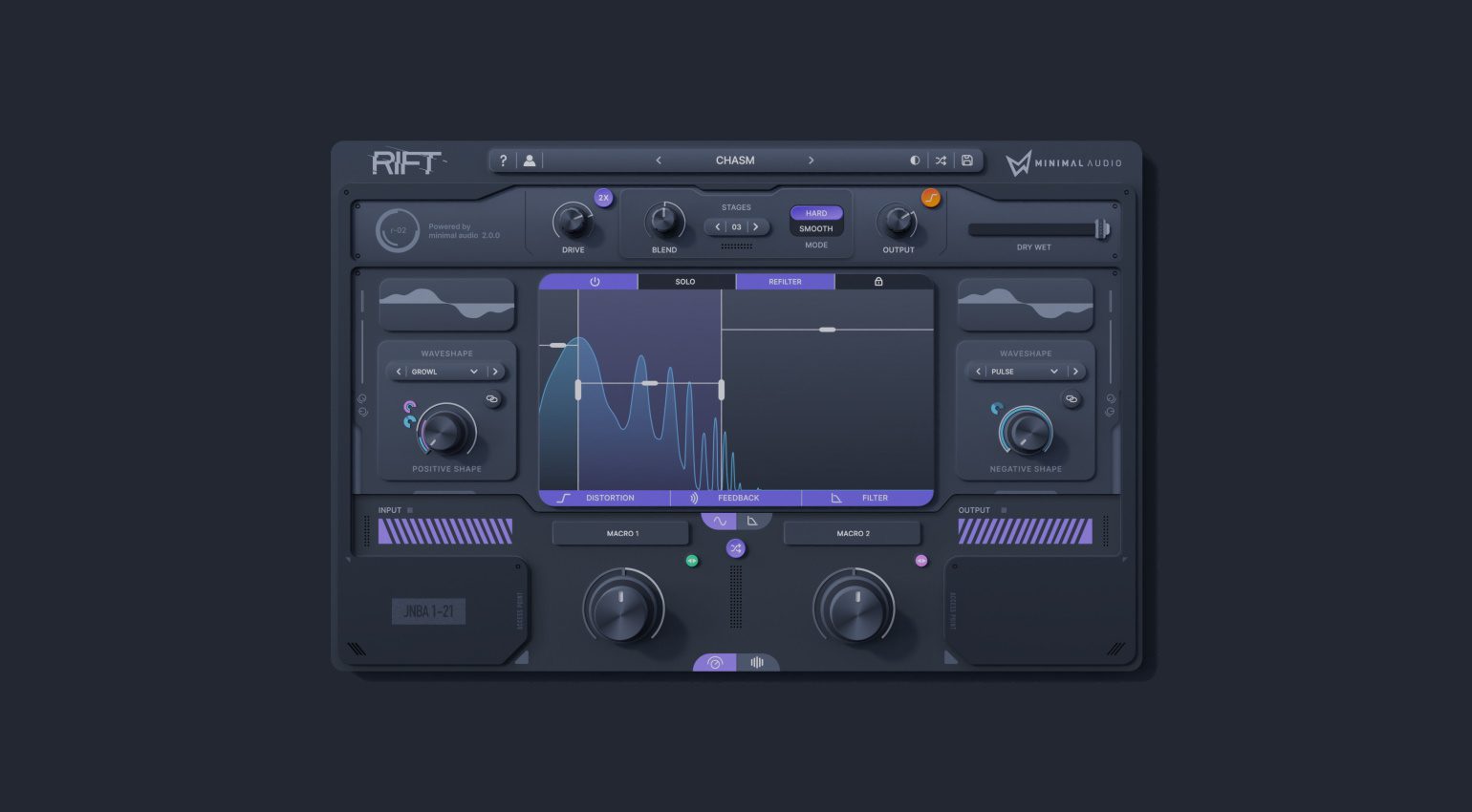
More information
Video
You are currently viewing a placeholder content from YouTube. To access the actual content, click the button below. Please note that doing so will share data with third-party providers.

